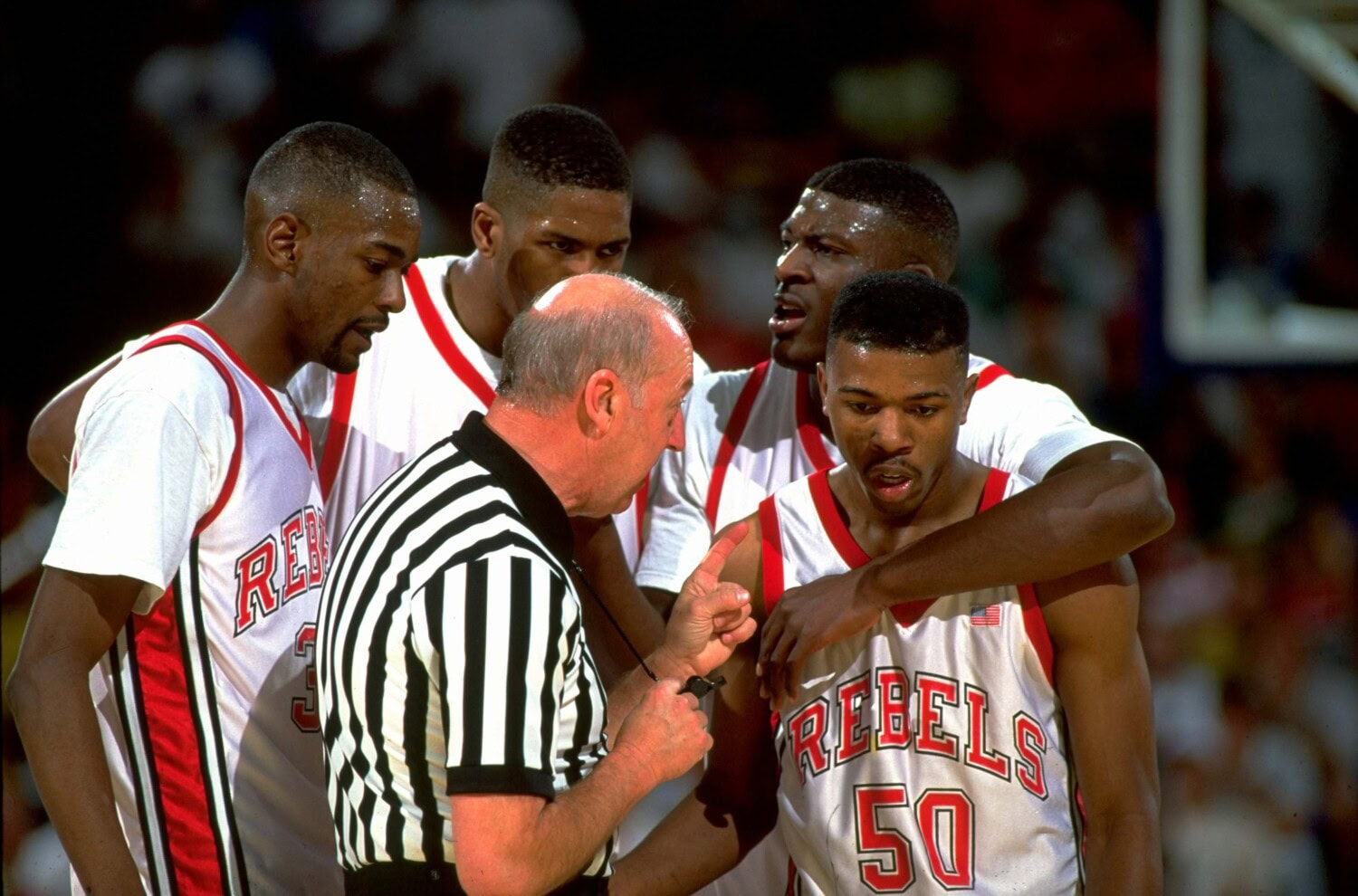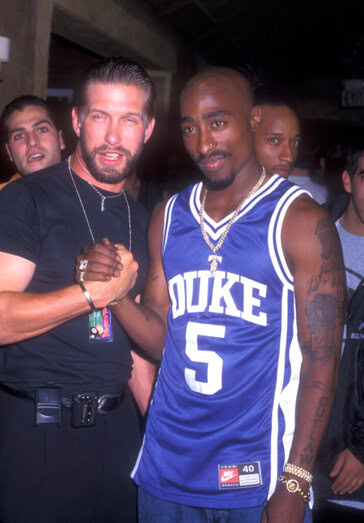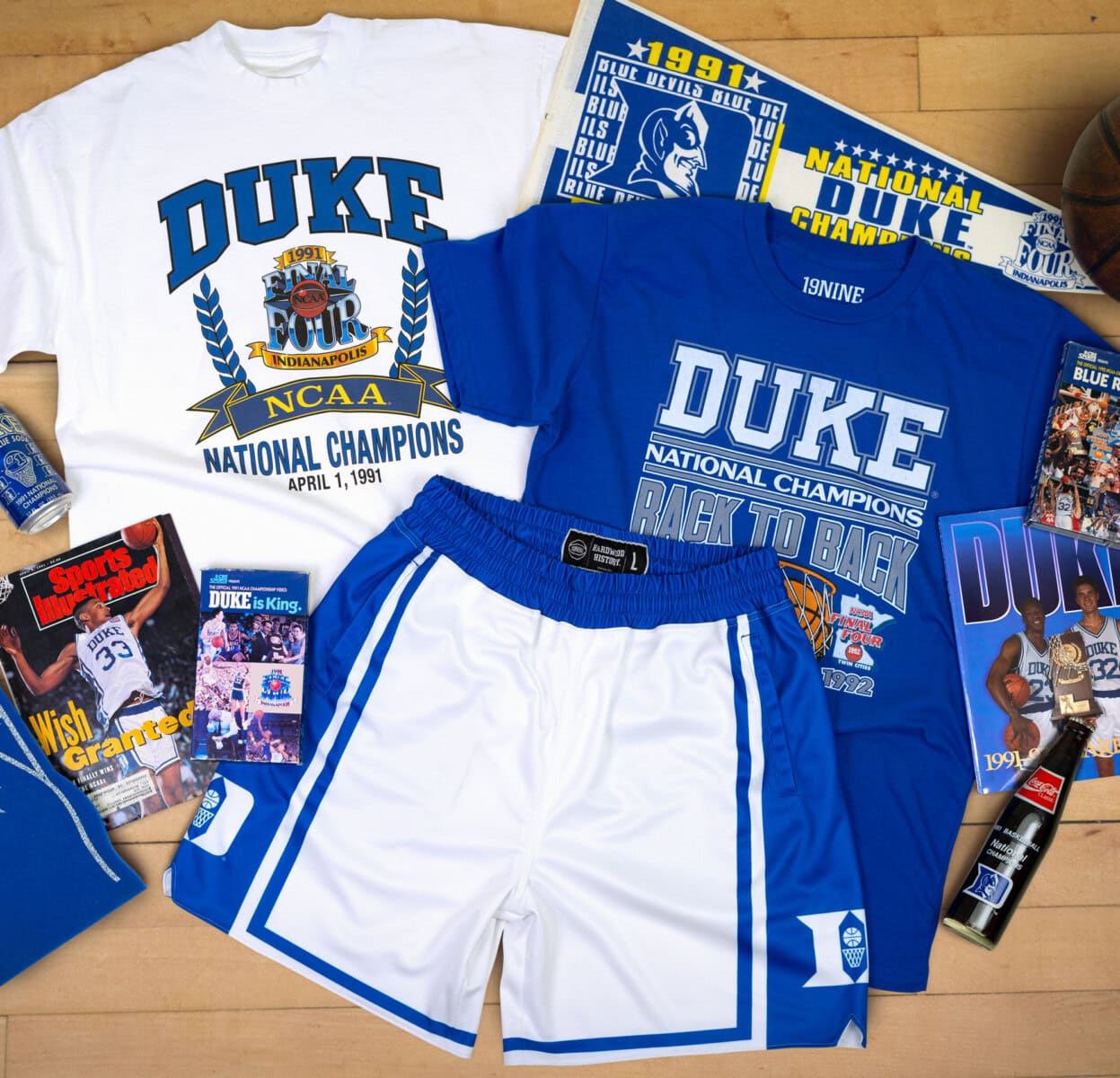In 1991, Coach K’s ball club beat a red-hot Runnin’ Rebels team who had just won 44 games straight. Learn how that Final Four victory made Duke a national power and a booming brand.
Most heavyweight rematches don’t receive TV top-billing if they follow public beatdowns.
However, as they say, styles make fights.
On Mar. 30, 1991, Coach Mike Krzyzewski faced a familiar foe: the UNLV Runnin’ Rebels. Just one year earlier in Colorado, the brash bunch from Nevada had given his Blue Devils a black eye by way of a 103-73 trouncing.
For the hoop historians at home, that 30-point whooping was the biggest blowout in NCAA Championship Game history, a record that still stands today.

Wiping the floor with the private school squad, Coach Jerry Tarkanian’s talented roster ran up the score in front of 17,675 fans, and many more tuned into CBS.
Somehow, by the divine workings of both the basketball gods and network television, Coach K, Christian Laettner, and the rest of the returning starters had to stare down Larry Johnson, Stacey Augmon, and Greg Anthony as they approached jump ball 360 and some odd days later.
While the rosters remained similar, the storylines and aesthetics couldn’t have been any more different.
UNLV, a Nike-sponsored squad in the midst of an exorbitant winning streak, had the swag, resume, and apparel of a super group signed to Death Row.
Duke on the other hand had short shorts, a soft reputation, and the burden of being embarrassed on live television by the same school two years in a row.
“People forget about how big of an underdog they were against UNLV,” 19nine VP and co-founder Josh Barnett told Boardroom. “Go back and check the line on the game and read articles. Nobody thought they had a shot.”
By defying the odds and beating Vegas — both literally and figuratively — Coach K and Christian upended an astronomical line to win 79-77 off the strength of two clutch Laettner free throws.
In what many consider the greatest college game of all time, Duke turned the tables in that Final Four rematch en route to becoming not just the 1991 national champions but also a national brand that still registers as retail royalty today.
Learn how an unprecedented upset changed the fortunes of Duke Basketball in regard to scale and marketing and why that polarizing squad still sells through retro nostalgia today.
King of the Hill
Going to battle with UNLV in the Hoosier Dome carried a weight that couldn’t be measured in a box score.
Wearing war wounds from the previous season’s shellacking, Coach K entered the Indiana arena still standing in the shadows of his former Army commander, Bobby Knight.
Like Knight, the military man ran a tight ship outfitted by Adidas.

Though the Three Stripes were the toast of college hoops for the late ’70s and early ’80s, the trefoil tag was losing its cache to a Beaverton brand more interested in programs and personalities that could market themselves via highlights, antics, or even controversy.
At the University of Las Vegas Nevada, Jerry Tarkanian took a longstanding relationship with Sonny Vaccaro and a surface-level reverence for NCAA rules to build an uptempo Nike-branded ball club full of high flyers and future first-round picks.
Coming into the 1991 Final Four, the Runnin’ Rebels rocked black Nikes before the Fab Five arrived in Ann Arbor and baggy shorts while Duke still showed full-thigh. Superstar forward Larry Johnson was en route to go No. 1 overall in that year’s NBA Draft with Stacey Augmon and Greg Anthony also landing in the lottery.
Coming off the 1990 National Championship thrashing of Duke, UNLV fan gear was hotter than the strip in July.
Conversely, most fashionable fans were not rushing to Eastbay to order a royal Duke sweatshirt or a matching set of shorts.

Simply put, the flashy sheen of Nike-endorsed UNLV was cooler and more contemporary than the Blue Devil bunch it just beat up on.
Coming into the March Madness matchup in 1991, Cameron crewnecks were to be worn in aspirational fashion at ACT prep classes or around the offices of Fortune 500 companies by proud alumni on Casual Friday.
As a brand, Bobby Hurley and his high short style of hoops were not marketable to the masses, especially after being dominated.
However, Hurley had help this time against UNLV. He had a freshman forward by his side.
“The big difference is that they added Grant Hill,” says Barnett. “Grant Hill is the guy who gave them that swagger, that defender on the wing. He ate up Stacey Augmon and when you look back, that’s the difference in the game.”
Hill, the son of Dallas Cowboy running back Calvin Hill, was only 18 years old when playing in his first Big Dance yet a man among boys where skill, size, and speed were concerned.

The freshman phenom with a Fresh Prince flattop was the literal difference in a 32-point swing when considering conquering a team that hadn’t even had a close game all season.
He was also the calling card for making Duke real-life winners and, in turn, a national brand fans both loved and love to hate.
Coming into the 1991-92 season, Duke was No. 1 in the nation. The perpetual underdogs had turned a corner thanks to the wild win over UNLV and finishing the job two days later against Kansas.
Thanks to the heroics of Grant Hill, Duke now had a target on their back.
Soon, they’d also have a new logo on their feet.
Checkmate
Duke started and ended the 1991-92 season ranked No. 1.
While the team was the heavy favorite going into the 1992 Final Four, the previous narratives surrounding aesthetic ethos were only amplified.
No longer the underdog, Coach K and Co. rolled into Minneapolis with Adidas on their backs and a cocky confidence across their faces. The battle-tested team was facing Michigan’s Fab Five: the spiritual successors to Tarkanian’s UNLV team in regard to talent and swagger.
Fans across the country thought they’d seen this movie before by way of the 1990 beatdown.

Boy, were they wrong.
Hill and his teammates absolutely demolished Chris Webber and Co., beating the Fab Five by 20 points in the 1992 National Championship game. It would be the second time Coach K’s club cut down the nets in two years and it’d also be the last time any Blue Devil ball club would be outfitted in stripes.
Coming off back-to-back national titles in Adidas — while beating the two most hip-hop hoop teams in NCAA history — Nike signed Coach K to a 15-year contract worth $375,000 a season. It all came with a $1 million signing bonus plus stock options.
Though the Blue Devils retained their country club image on-court, they were the baddest boys in all of amateur basketball simply because they beat the best. Now with the battery in their back of championship confidence and the marketing machine of Nike, the recruiting trail and fanfare exploded.
Take this for example: When Tupac Shakur went on Video LP to promote his debut solo album and his role in Juice, the artist/actor wore a UNLV beanie and matching Runnin’ Rebels tee.
By 1996? You could catch him in Hollywood rocking an authentic Duke No. 5 jersey made by Nike.

Jeff Capel — the player aligned with the infamous Shakur co-sign — called it the “coolest thing” two decades later and says he still uses the photo as a recruiting tool.
For fans of other programs saying it was a one-off incident or the result of 2Pac losing a bet, the tale of the tape shows otherwise.
In the years that followed, you could catch Puff Daddy donning a Ricky Price replica or Cam’ron rocking a Trajan Langdon tank.
Simply put, the big wins over UNLV and U-M made Duke a team with clout. The mass marketing from Nike and silky uniforms positioned them as the Tommy Hilfiger of hoops gear.
This success with the Swoosh lasted for generations and it’s still going strong. In 2015, fresh off winning his fifth national championship, Coach K extended Duke’s deal with Nike all the way through 2027.
In the midst of March Madness in 2023, it’s still the story of the team’s iconic upset in 1991 that’s driving sportswear sales today.
New Nostalgia
This fall, seven years after Coach K signed the Swoosh extension and 21 years after he upset UNLV, Duke welcomed 17,000 students enrolling in classes.
You don’t have to be a math major to know that none of those freshmen were even alive when Grant Hill helped the Blue Devils get over the hump.
Still, the appetite for fashion from the ’90s and fanfare that spreads far past Durham does numbers. This is all illustrated by a capsule collection celebrating that 1991 squad made by the nostalgia basketball brand 19nine.
“We wanted Duke forever,” Barnett says. “Our in actually came over the summer when we met with the NIL group there.”
Based out of Evansville, Ind. — less than 200 miles away from where the win in the Hoosier Dome took place — Barnett and Co. drove down to Durham to see the land of the most lauded hardwood heroes and illusive apparel.

“They have Laettner’s game-worn jersey on display in Cameron,” 19nine creative director Matt Breivogel told Boardroom. “You better believe I was taking as many photos as possible.”
The photos — both for research and promotion — exemplify the energy associated with Duke’s proud past and bright future.
19nine’s aptly but unlikely Underdog Collection with the Brotherhood came by way of having brand interns paint their faces like Cameron Crazies for storytelling. Photoshoots also showcased Duke’s active roster of athletes currently competing in the NCAA Tournament.
The reaction to players and products positioned moments before any of them were even born was both surprising and telling for the folks at 19nine.
“They love the past,” says Barnett. “The athletes were picking Grant Hill stuff for a retro photoshoot over Paolo! Those guys didn’t want to wear anybody’s stuff that they were about to play against. The nostalgia stuff went crazy. Everybody was grabbing the Hill and Laettner stuff which was hilarious to us.”
For the collection, Breivogel recreated the 1991 game shorts in sublimated fashion with pockets for lifestyle wear. Additionally, they brought out banner tees, practice jerseys, and reprints of famous Final Four shirts.

“The designs are basically what these kids thrift for today,” Barnett says. “So you create this garment that is exactly what they are searching for but you’re mass producing it so that everybody can have it much easier.”
It all aligns with a basketball brand that’s massively larger than its private school enrollment. One that’s exploded based on their winning ways as well as recent All-Star alum like Jayson Tatum, Zion Williamson, and Kyrie Irving.
For the brands invested in Duke Basketball, the proof is in the pudding.
In only a matter of hours, the 19nine shorts have already sold out. The buzz began when they first teased the partnership last month, creating conversation that was louder and more varying than any of the dozens of programs they produce products for.
“Duke’s different than any school in the sense that if you post anything about Duke? You will get sometimes as much or more hate in the post than love,” says Breivogel. “But no matter what the post will blow up.”
“Duke is small and it’s private,” says Barnett. “Then you have this stigma of being prestigious and preppy. This launch? The stuff that we’re putting out there and getting back is so different than any other school. Some people truly hate Duke but there is a ton of fans out there.”
A ton of fans is not hyperbole both in basketball and in business.
Last year, Duke Basketball reported $33.4 million in revenue — the most of any team in that year’s tournament.
Still, it all dates back to that epic upset against UNLV where the Blue Devils became a bigger brand than any pundit could ever predict.
“You have to go back a ways for Duke to be an underdog,” says Barnett. “1991 wasn’t the start, but it was the culmination.”